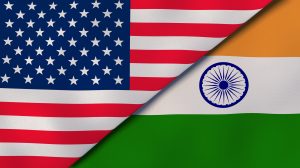India’s global leadership ambitions and ability to act as an effective backstop against Chinese aggression depend on its strategic defense capabilities. However, India’s domestic defense production sector faces imminent risk from the very contender it aims to pacify. China sits atop several strategically important minerals supply chains. India, with partners like the United States, must de-risk critical minerals supply chains in three ways — create a multilateral knowledge bank; promote technical cooperation; and improve financing mechanisms.
Why It Matters for India.
India has ambitious goals for its defense sector. The government has taken steps such as increasing the defense ministry’s budget to $71 billion in 2023; increasing bilateral and multilateral engagement through mechanisms like the Combined Maritime Forces, Bahrain; and promoting domestic defense production. Consequently, India’s defense exports have increased from $182 million in 2016-17 to $1.9 billion in 2022-23.
Significant steps to triple domestic defense manufacturing to $36 billion by 2028-29 include:
- The Department of Military Affairs has issued five positive indigenization lists (PILs), listing 509 items that the government will procure domestically.
- The Department of Defense Production has notified four PILs with 4,666 items.
- The Defence Research & Development Organization (DRDO) has released two lists of 183 items that it will not design and develop, and instead source from industry. These include specialized drones, solar panels, terrestrial data links, and prismatic Li-ion batteries, among others.
- DRDO has announced 75 priority areas for research and development, including additive manufacturing, quantum technology, and sensors.
Several targeted items rely on critical minerals sourced from China such as beryllium, rare earth elements (REE), tantalum, gallium, and lithium. All production can come to an abrupt halt if China wills.
Supply Chain Risks
Fear of unilateral Chinese action is not purely anticipatory. In August 2023, China banned exports of germanium and gallium, which are key for semiconductors. In December, China banned export of REE extraction and separation technology, and introduced export controls for graphite. REEs are used in magnets and lightweight alloys, and graphite is used in anodes for nuclear reactors and batteries.
A recent analysis by India’s Chief Economic Advisor quantifies the risk: 23 percent of all foreign inputs in India’s manufacturing come from China. The United States’ dependence on China is 28 percent.
Roadmap for Cooperation
- Multilateral Cooperation. There is significant momentum for multilateral cooperation. U.S. Deputy National Security Adviser Jonathan Finer recently announced the inclusion of critical minerals and REE processing under the U.S.-India initiative on Critical and Emerging Technology (iCET). The U.S. Department of Defense’s (DoD) 100-day review of critical minerals supply chains calls for “working with allies and partner nations.” India also joined the Minerals Security Partnership (MSP) in June 2023. While the MSP launched the MINVEST platform to promote public-private partnerships, it is not adequate.
MSP or another multilateral, such as the International Energy Agency (IEA), should be empowered as a knowledge bank. First, the organization can coordinate collating import dependence for critical minerals as several countries such as India, the United States and Australia have their own overlapping yet separate lists. Second, the organization must assess supply chain vulnerabilities by mapping priority minerals’ material flow analyses, and identifying partner countries’ strengths.
- Technical Cooperation. Technical cooperation on assessment and implementation should be expanded.
An assessment would include sharing tools for economic modeling and forecasts. For instance, the Defense Advanced Research Projects Agency’s (DARPA) Open Price Exploration for National Security program aims to reduce market information asymmetry by better price forecasting and economic modeling. DARPA’s Critical Mineral Assessments with AI Support reduce investment risk by improving supply assessment.
For implementation, partner countries can rely on the identified material flow analyses to complement gaps and strengths. For instance, for a REE — neodymium — China has extraction, but Australia has midstream refining, and Japan has processing technology. India holds 6 percent of all REE reserves and can benefit from Quad partners’ expertise.
- Financing Mechanisms. Mining and processing require long-term investments. The DoD can support India financially in exchange for strategic supply chain strengthening. There is precedence — Canada, Australia, and United Kingdom are members of the U.S. National Technology and Industrial Base. However, the U.S.-India defense partnership is not quite there yet. A reasonable approach will be making India a “qualifying country” — like Japan — for the Defense Federal Acquisition Regulation Supplement, thereby unlocking finance and supporting reciprocal defense procurement agreements, as originally envisioned by the U.S.-India defense industrial cooperation roadmap. The Development Finance Corporation (DFC), which aims to advance “U.S. foreign policy priorities,” can be a partner too. India is currently the largest beneficiary and has received $3.8 billion. New capital can be specifically earmarked for critical minerals projects.
Great power competition is here to stay. The United States must tilt the board for partners like India by supporting defense capabilities. India too seeks to gain from indigenized defense production. Strengthening minerals supply chains will hence be mutually beneficial.
—–
This article was originally published in New Perspectives on Asia from the Center for Strategic and International Studies and is reprinted with permission.

































